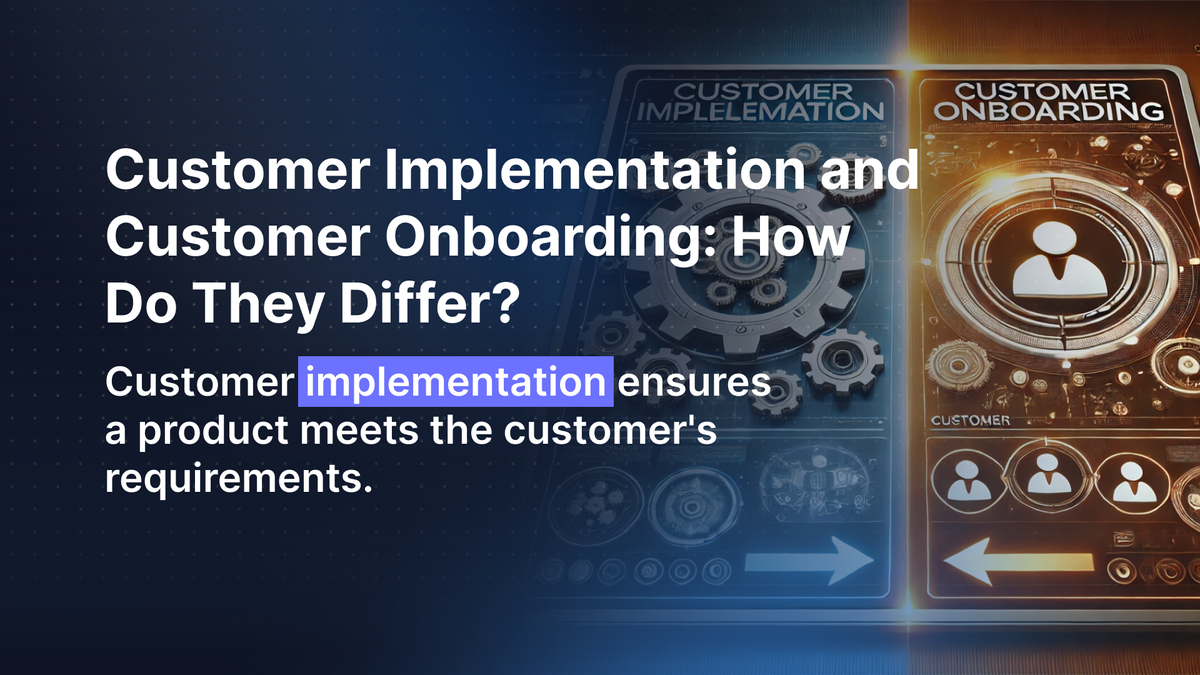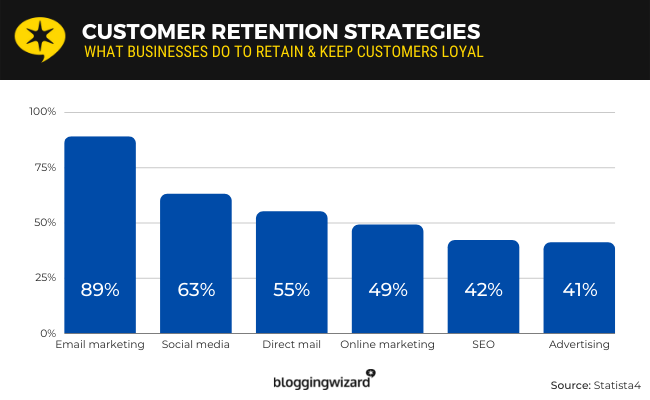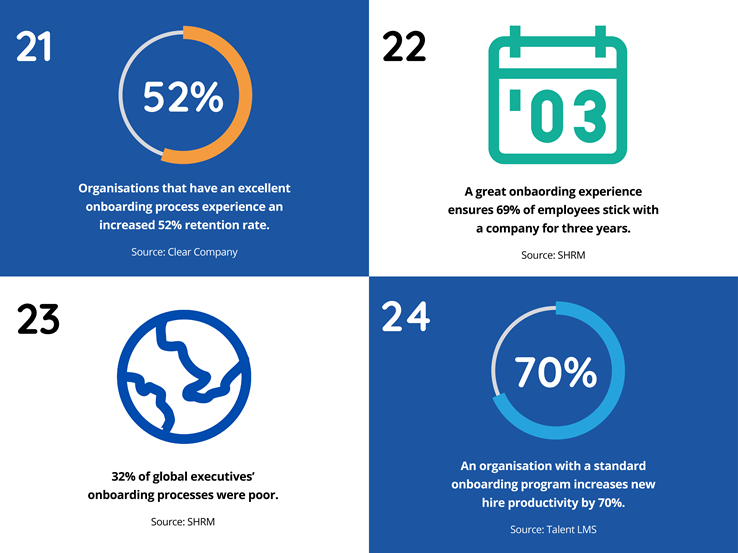Customer implementation ensures a product meets the customer's requirements. ...

Keeping customers happy and satisfied is essential, especially since acquiring new customers is about 5 to 25 times more costly than retaining a customer. This is where customer implementation and onboarding play their role. However, the line between these processes is often blurred, and it’s important to understand the distinction between the two for the success of a product or service.
While customer onboarding and customer implementation have different processes and strategies, they both significantly impact each other. So, let’s get in and see how these concepts differ and what we can do to make them work together.
Customer implementation is the process of setting up a product or a service to ensure it fits customers' requirements. It is about finding the right way for the customer to use the product. The goal is to set everything up to build a successful and long-lasting customer relationship.
While there are many strategies for customer retention, as shown in the image below, customer implementation always leads to customer retention. This is because the actual product functioning helps decide whether the product is working for the customer or not. And if it’s not working, you can always persuade a customer with a solid client implementation process.

Source: Statista
To make a product work for the customer, a brand should be aware of all the details of the product and the customer’s definition of success.
For example, when you sign up for a new bank account, the bank doesn’t just give you access and lets you explore it alone. Instead, they guide you through the setup process. They help you set up your online account and ensure all your personal details and security measures are in place. Finally, they link your other accounts to help you understand the mobile app for easy access on the go.
Customer onboarding includes kickoff activities that guide customers from the beginning of their first interaction with the company. It covers the complete journey from the point of the sales team's convincing until they are fully engaged and self-sufficient company customers. Here are a few statistics showing the importance of customer onboarding:

Source: Oag Engage
The onboarding process solidifies the customers’ trust in the company and makes them believe that their product is the right solution for the customer. It’s important to understand that even the simplest of products require a solid customer onboarding strategy to make the customers stick with your product for a long time.
For example, if your company provides project management software for teams, the onboarding process would include a welcome message, followed by explaining the core features and functionalities of the software through guided tutorials or a video tutorial.
For better personalization, the customer success manager will help customize the software to fit the team’s needs. There will be follow-up emails and constant tips and resources. Personalization is essential, as 83% tend to be more loyal to a brand that offers a personalized experience.
These two concepts are essential and often overlap but serve different purposes. The onboarding process precedes customer implementation. Customer onboarding is a broader process that includes implementation but goes way further.
It introduces customers to the product ecosystem and begins a new relationship with them. Onboarding involves resources, training, and guides to help the customers become self-sufficient users. The focus here is on the customer experience, user engagement, and satisfaction.
On the other hand, customer implementation ensures that the product meets the customer’s business requirements and is suitable for the end user. The goal is the technical setup of the product or service. It is about getting everything ready and working from a technical standpoint. Unlike onboarding, this process focuses on the product to benefit the customers.
Effective coordination between the implementation and onboarding teams minimizes the chances of errors during the process and prevents overlapping. It also ensures smooth initiation and running. Here’s how these processes can be made to work together:
Both customer implementation and onboarding teams should start by researching collectively and understanding the customer's goals. pain points, and needs. This collaboration helps create a consistent plan that maximizes customer onboarding success. With a clear understanding of the customers’ expectations, you can have a smooth transition from onboarding to implementation and help tackle any challenges that come your way.
If there’s one thing that holds the entire process together, it’s communication. Besides clear and effective communication between the teams, it’s also necessary to keep customers informed right from the start. Each team should take responsibility for ensuring that the customers feel well-supported. The key is to send regular updates, avoid technical jargon, and send follow-ups. Make sure you maintain open communication and address the concerns quickly. This really helps in increasing customer retention rates.
For a good customer experience, the onboarding plan should be shared among both teams. This will help align the technical setup and user training. A unified plan with responsibilities, key milestones, and timelines makes it easier to set expectations regarding what’s next. With such integrated planning, there remain no gaps or overlaps. This way, the products are not only set up perfectly but also fully integrated into the customer’s daily use.
Customer onboarding and customer implementation are not the same or equal. They are different processes with different goals, aims, processes, and teams. While onboarding is important to ensure the customer sticks to the product for a long time, customer implementation is about ensuring the product meets the customers’ requirements. Overall, they help enhance customer service.
The best way to carry out these processes is through AI Support, like AI Chatbot customer service. With AI Customer service, the experience becomes smoother, faster, and more personalized for the audience. If you have the same goal, there is no option better than Aidbase. You can get the chatbots built from scratch and customize them according to your needs. So, get in and explore them with us.